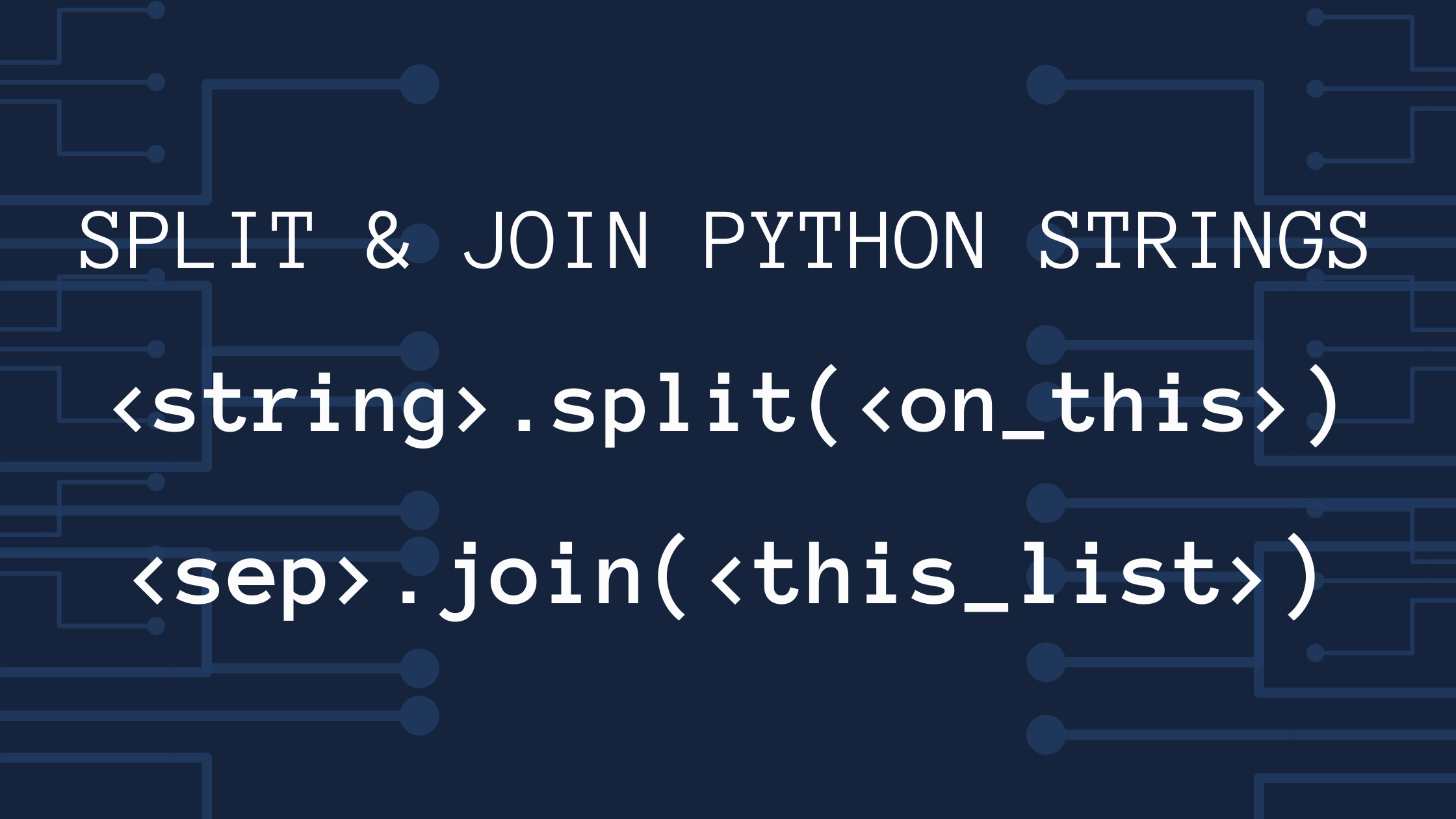When working with strings in Python, you may have to split a string into substrings. Or you might need to join together smaller chunks to form a string. Python's split() and join() string methods help you do these tasks easily.
In this tutorial, you'll learn about the split() and join() string methods with plenty of example code.
As strings in Python are immutable, you can call methods on them without modifying the original strings. Let's get started.
Python split() Method Syntax
When you need to split a string into substrings, you can use the split() method.
The split() method acts on a string and returns a list of substrings. The syntax is:
<string>.split(sep,maxsplit)In the above syntax:
<string>is any valid Python string,sepis the separator that you'd like to split on. It should be specified as a string.
For example, if you'd like to split<string>on the occurrence of a comma, you can setsep = ",".
sepis an optional argument. By default, this method splits strings on whitespaces.maxsplitis an optional argument indicating the number of times you'd like to split<string>.maxsplithas a default value of-1, which splits the string on all occurrences ofsep.
If you'd like to split<string>on the occurrence of the first comma, you can setmaxsplit = 1.
And setting maxsplit = 1 will leave you with two chunks – one with the section of <string> before the first comma, and another with the section of <string>after the first comma.
When you split a string once, you'll get 2 chunks. When you split a string twice, you'll get 3 chunks. When you split a string k times, you'll get k+1 chunks.
▶ Let's take a few examples to see the split() method in action.
Python split() Method Examples
Let's start with my_string shown below.
my_string = "I code for 2 hours everyday" Now, call the split() method on my_string, without the arguments sep and maxsplit.
my_string.split()
You can see that my_string has been split on all whitespaces and the list of substrings is returned, as shown above.
▶ Let's now consider the following example. Here, my_string has names of fruits, separated by commas.
my_string = "Apples,Oranges,Pears,Bananas,Berries"Let's now split my_string on commas – set sep = "," or only specify "," in the method call.
my_string.split(",")As expected, the split() method returns a list of fruits, where each fruit in my_string is now a list item.

▶ Let's now use the optional maxsplit argument as well by setting it equal to 2.
my_string.split(",",2)
Let's try to parse the returned list.
Recall that my_string is "Apples,Oranges,Pears,Bananas,Berries", and we decided to split on commas ( ",").
- The first comma is after
Apples, and after the first split you'll have 2 items,ApplesandOranges,Pears,Bananas,Berries. - The second comma is after
Oranges. And you'll have 3 items,Apples,Oranges, andPears,Bananas,Berriesafter the second split. - At this point, you've reached the
maxsplitcount of 2, and no further splits can be made. - This is why the portion of the string after the second comma is lumped together as a single item in the returned list.
I hope you understand how the split() method and the arguments sep and maxsplit work.
Python join() Method Syntax
Now that you know how to split a string into substrings, it's time to learn how to use the join() method to form a string from substrings.
The syntax of Python's join() method is:
<sep>.join(<iterable>)Here,
<iterable>is any Python iterable containing the substrings, say, a list or a tuple, and<sep>is the separator that you'd like to join the substrings on.
In essence, thejoin()method joins all items in<iterable>using<sep>as the separator.
▶ And it's time for examples.
Python join() Method Examples
In the previous section on the split() method, you split my_string into a list on the occurrences of commas. Let's call the list my_list.
Now, you'll form a string using the join() method to put together items in the returned list. The items in my_list are all names of fruits.
my_list = my_string.split(",")
# after my_string is split my_list is:
['Apples', 'Oranges', 'Pears', 'Bananas', 'Berries']
📑 Note that the separator to join on should be specified as a string. You'll run into syntax errors if you don't do so, as shown below.
,.join(my_list)
▶ To join the items in my_list using a comma as the separator, use "," not ,. This is shown in the code snippet below.
", ".join(my_list)The above line of code joins items in my_list using a comma followed by a space as the separator.

You can specify any separator of your choice. This time, you'll use 3 underscores (___) to join items in my_list.
"___".join(my_list)
The items in my_list have now been joined into a single string, and have all been separated from each other by a ___.
And you now know how you can form a Python string by putting together substrings using the join() method.
Conclusion
In this tutorial, you've learned the following:
<string>.split(sep, maxsplit)splits<string>on the occurrence ofsep,maxsplitnumber of times,<sep>.join(<iterable>)joins substrings in<iterable>using<sep>as the separator.
Hope you found this tutorial helpful. Happy coding!

